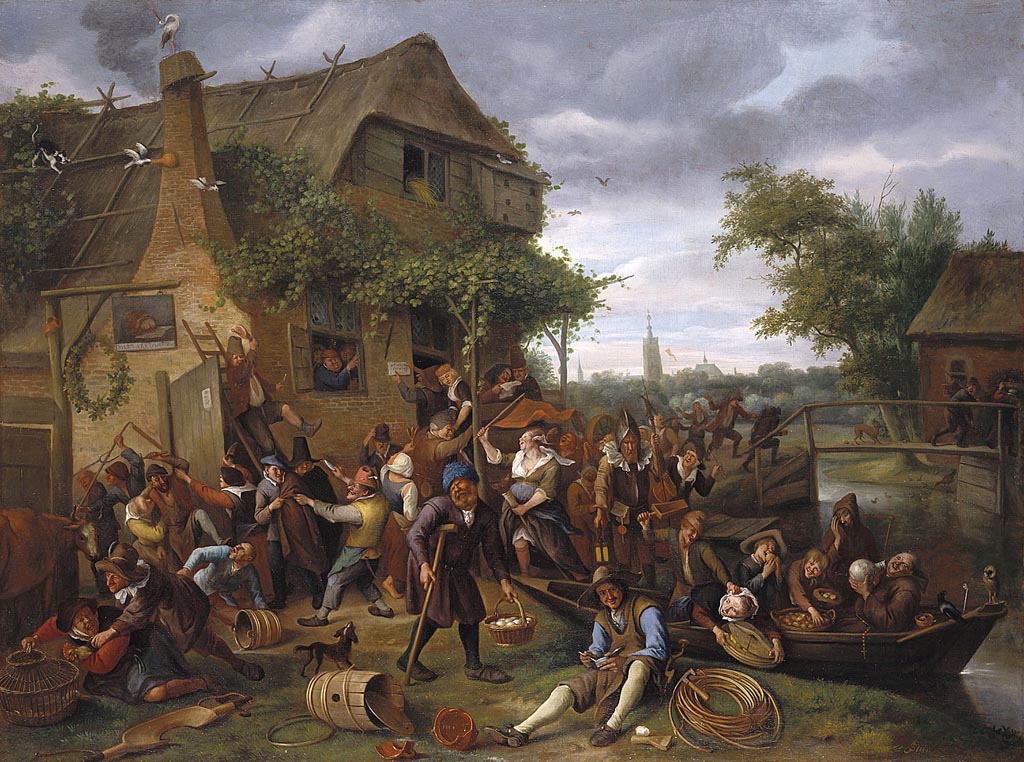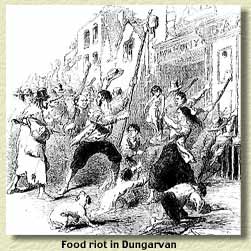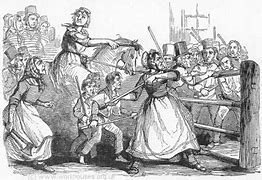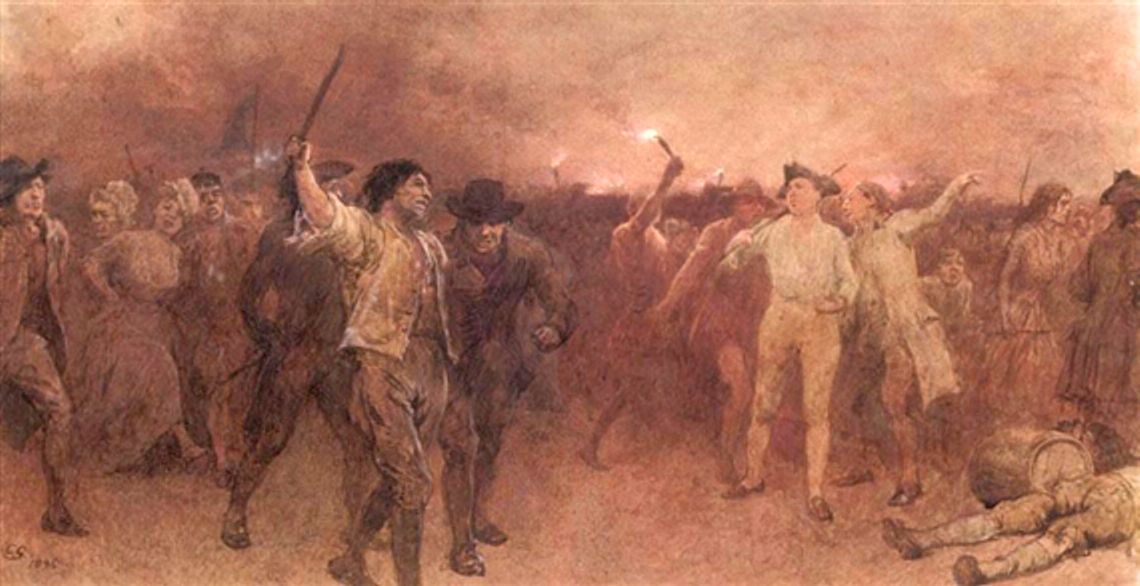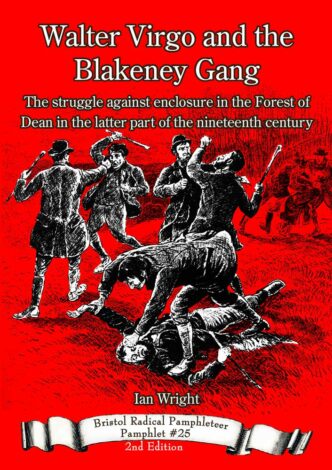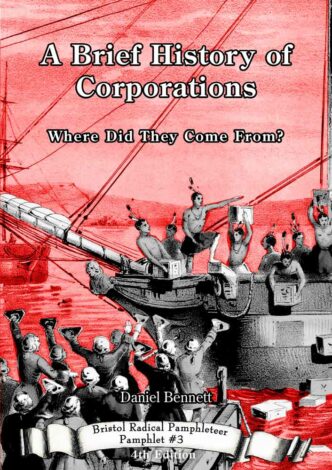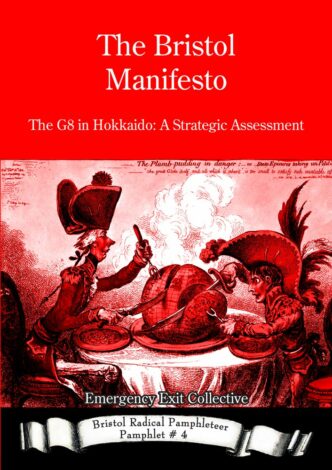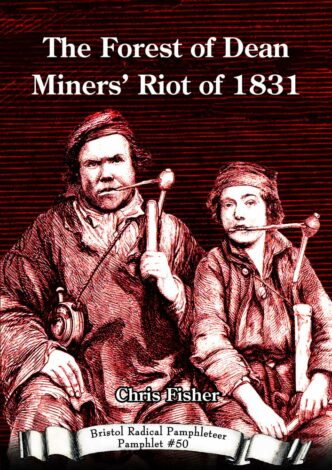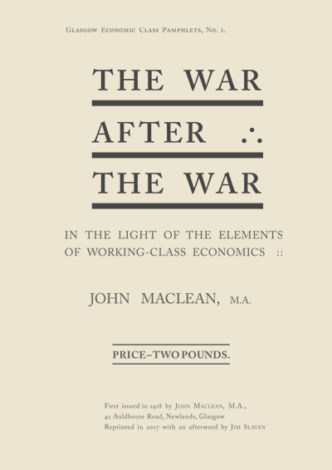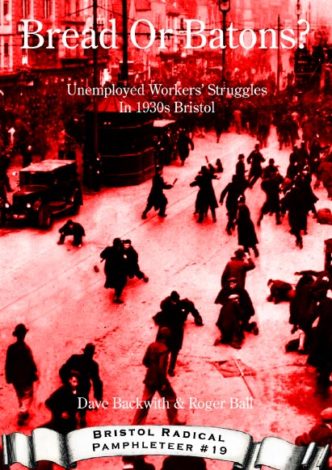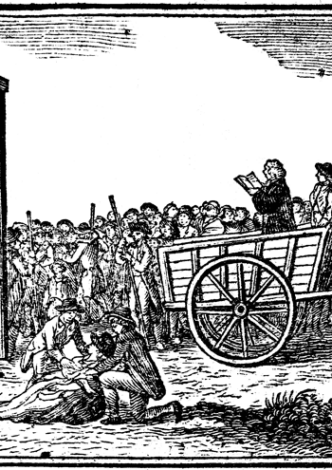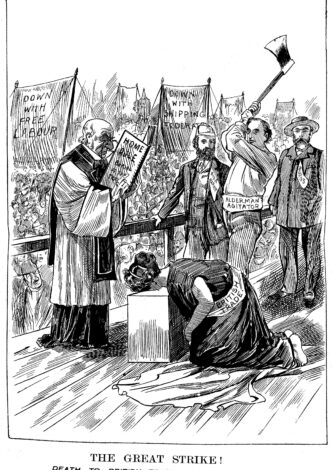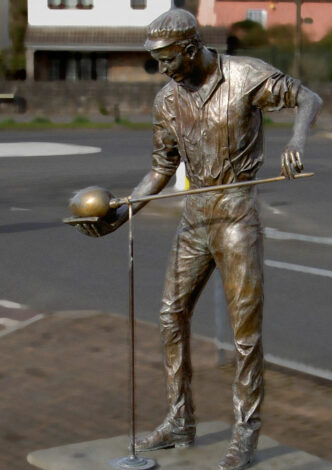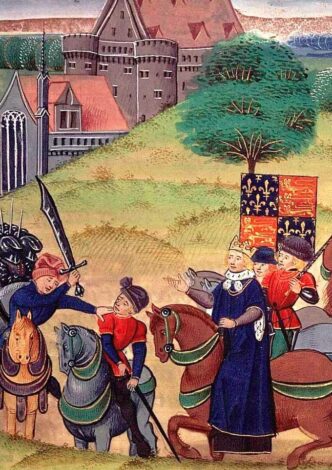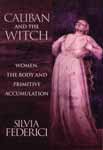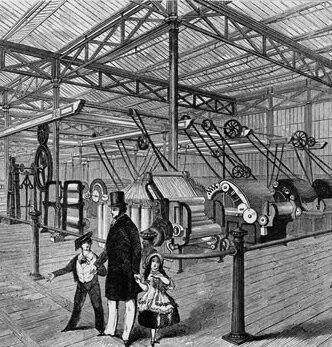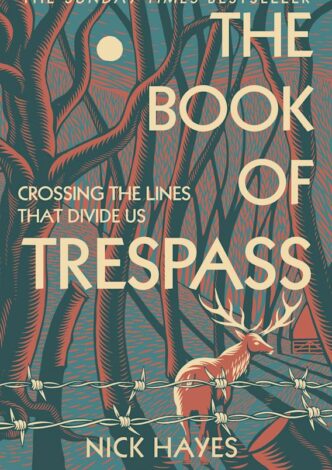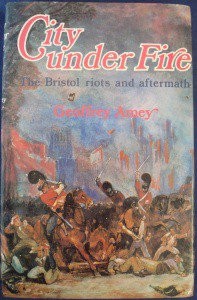The phrase “the moral economy” was first used by E. P. Thompson, within the essay of the same name.[ 1 ] He explained it as was part of a long change in economic and community relations. As Britain industrialised at speed, there was a change from a paternalistic rural economy, to a free market guided by the ideology of Adam Smith. The moral economy related to part of the resistance from the labouring poor during these economic and social upheavals. This was community based, with a crowd of people with similar grievances and objectives, confronting an agreed target. On occasions they were seeking arbitration, or support. On others they were seeking justice. It is important to note that they felt that their actions were legitimate. Thompson explains:
by the notion of legitimation I mean that the men and women in the crowd were informed by the belief that they were defending traditional rights or customs[ 2 ]
John Bohstedt sums this up perfectly, writing:
the chief principles of that moral economy were that the food trade must be governed by community need, not selfish profit motives; hence food dealers should only ask the just price, not market price inflated by scarcity.[ 3 ]
As suggested, this was not an overnight occurrence, and there were many struggles along the way. Before the 1750s Britain was a largely rural society, with most people working in agriculture.[ 4 ] Many farm labourers were employed all year round, being hired at specific fairs. Some were hired for particular skills, like shepherds, or hedgers whilst others worked as labourers or domestic servants preparing produce for the table and the market. Many of these would live in the farmhouse, eating at the same table.[ 5 ] They would have a personal interest in the well-being of the farm, for employment, housing, and subsistence. Other workers might just work for the farm for specific reasons, on a weekly or even daily basis. For example, during harvest, or major improvements. There were benefits to being a day labourer, like enhanced rates, and piecework[ 6 ]. Many of these would work for other farms or have skills that allowed them to have small businesses, like blacksmiths, masons or ploughing teams these were more skilled and would charge more, and enjoy a degree of independence from the farmer. But the farm hands who did not live on site, could have a tied cottage, further binding themselves to the farmer. These tied housing arrangements came with access to a small garden, but also the commons. The commons were an essential part of the labourer’s family’s lives. They could gather food, graze livestock, collect wood and other naturally occurring produce for building and maintaining. The Commons were used collectively, and all users had a common interest in the upkeep and subsistence of the land. For example, you could not just go and buy 30 cows, and start grazing. This would constitute overuse by a single commoner, and the collective would take measures. Another good example of collective governance was the one-day house. If a new couple, from within the community, wanted to set up a home, they would be allotted a parcel of land. The whole common would turn out and build a structure with four walls, and smoke coming out of the chimney. Custom would have it, that the house had to be built within dawn to dusk. Thereby being a one-day house. The garden would be determined by the new owner standing with his back against the walls, one in turn. They would then throw an axe. Where the axe landed would mark the boundary of the new home dweller’s personal allotment.[ 7 ] Custom, and commoning was a mainstay of the worker’s lives in pre-industrial Britain. With differing regional and localised customs being handed down through generations and acted out within the community.
However, it was not all a land of milk and honey. It was still an exploitative system, with the commoners having very little rights outside of their common. The work was hard, and poorly paid. The day labourer would need their garden, because his wages would not suffice for the family’s needs. His wife could also be employed in the fields, perhaps during peak times, like harvest. But she could also have a side line. The kids could also be utilised to build the family’s weekly income. They could be engaged in bird scaring or gathering wood for the farmer. But if the farmer did not need the labour, then hardship would follow, and perhaps a plea for poor relief. There was no sick pay, or old age retirement. For those that could not work, or unable to receive outdoor parish relief, the workhouse beckoned. If the labourer lost his job, then the house could be lost also, with the access to the commons. Therefore, the employers could act in a despotic manner, with complete control over the labourer, and his family’s lives. Church attendance on Sunday, the only non-working day, was normally compulsory, irrespective of your personal religious beliefs. Within the village, the level of control could differ if you lived in an open or closed village. An open village had several large landowners, with control over their workforce, and partial control over village society. A closed village had one large landowner. In these situations, the landowner would have total control over the village’s population, from pub licences, to parish relief. If you fell foul of their temper, you could be forced to leave the parish, and in these times when most did not travel further than a few miles, this could be disastrous, especially with the settlement laws.
Domestic servants were especially vulnerable to abuse. Many female domestics would become single mothers on parish relief, ostracised by the community. Dismissed from service, protecting the farmer or perhaps his son from admitting fatherhood, she could then find it difficult to secure alternative employment within the area. Due, to a sullied character, because of a previous abusive and exploitive sexual relationship. English rural society was still very conservative, judgemental and closed. Those that fell foul of public opinion could be forced out, as doors and opportunities were closed to them. All these factors contributed towards the push pull factors for labour during industrialisation in the cities.
The commons were under attack also from the Enclosure Acts. These Acts allowed the landowner to apply to parliament to take the common, fence it off, and develop it for profit. The cottagers would get some compensation, but not enough to reimburse for the loss of common produce. Families were now dependent on wage labour and had no other income. Wood and berry gathering became illegal, as the commons became the landowner’s property. Transgressors could be transported oversea as punishment. After the 1723 Black Act, some could be hung, especially if they were in disguise. Most Enclosure Acts were successful, in law, as the community did not have the literacy to engage legally, the funds to go to London or the ability to employ a legal team. But they could and did riot. This could include a symbolic procession, marking out the bounds of the commons, and tearing down fences. British history is littered with these events.[ 8 ] Very few were successful, and many ex-commoners lost their lives. The choice was stark-stay and become a day labourer, with periods on parish relief, or go to the new opportunities in the cities and towns.
The growth of these cities, and industrialising towns, brought other changes to the rural community. The need to feed the growing population was extremely important. These urban areas did not have the resources to feed themselves, and grain would need to come from the countryside; the new industrialising farms. Failure to keep the market properly stocked would lead to problems, and it was within these dynamics that E. P. Thompson first noticed the moral economy, within the food riot.
The food riot was the most common type of civil disobedience during the industrialising age. But as Thompson and others noticed, it was not just a savage mob driven by hunger. The crowd involved were organised and exhibited symbolism and custom whilst achieving their ends.[ 9 ] They sought support from the local authorities and harked back to management of the market; Thompson states that:
grievances operated within a popular consensus as to what was legitimate and what was illegitimate practices in marketing, milling, baking etc. This in turn was grounded upon a consistent traditional idea of social norms and obligations of the proper economic functions of several parties which taken together can be said to constitute the moral economy of the poor.[ 10 ]
Law underpinned this – there were regulations imposing order on the market, especially food stuffs. The Assize of Bread came into being in the thirteenth century. The Assize was administered by the Justices of the Peace, and regulated the weight, price and quality of the two most important goods; arguably, the two most important foodstuffs for ordinary people, bread and beer. This law was amended in 1822 and 1836 by Bread Acts. Even scriptures could be used to enforce the moral economy. Carl Griffin points to the Old Testament, which was littered with commands to the rich to protect the food supplies of the poor.[ 11 ]
A food riot could start in several ways. Shortages were obvious, but this was not just because of drought, pestilence and crop failure. The crowd would call out forestallers, hoarders and engrossers and challenge them. Engrossers, and forestallers would buy whole fields of food stuffs, and sell them in bulk for the best price. In 1788 the Steward at the Court of Leet, listed “engrossers” and “forestallers” as “public nuisances”, along with “dunghills” and “scolds”.[ 12 ] They would circumnavigate the local market, exporting it further afield. This would be at a direct detriment to the locals, some who had worked to produce the crops. At times of shortage they would collectively act to stop this. Hoarders were similar, but they would buy in bulk and hold until the price rose. They would therefore make their profits on shortages and would also normally sell in bulk. But the community, faced with possible starvation, would confront the farmer. This could take the form of a symbolic procession, confronting the farmer and making demands. These demands could be a promise to bring foodstuffs to market, and sell at a fair price, determined by the crowd. Failure to comply could lead to the farmhouse being pulled down. On occasions the crowd would help the farmer make the right decision. One crowd at Ipswich in 1800 heard that a farmer was demanding excessive prices for his corn, they:
collected themselves together, and forming a line on each side of the street, through which he had to pass, assailed him with such a volley of abuse, that it precipitated his departure[ 13 ]
They could seize the food, normally grain, and sell it themselves. Returning the empty sacks, and the money from the fair sales. These forms of direct action would take place in rural settings, a direct confrontation at the place of production. EP Thompson wrote that in a “deeply traditional West of England…..food rioting was almost a tolerated form of negotiation”.[ 14 ] In Exeter in 1757 a group of women approached a farmer after hearing that he intended to sell wheat at 15s a bushel. He was informed that he needed to lower the price, and if he did not bring the grain to market, then they would come and get it.[ 15 ] Interventions within the market were also common but disciplined. Rioters would rarely just take food, but instead would pay for it. At one disturbance in Brixham, Devon in 1800, during the course of negotiations some individuals took advantage, and stole some bacon and potatoes. However, the crowd forced them to give the food back, and publicly humiliated the miscreants.[ 16 ] On another occasion a Devonian farmer went to market, and asked 25s for a bushel of wheat. The locals let him know exactly what they thought of that. They tied a rope around his waist, and dragged him around the market, in a “rough manner”. They stopped now and again and asked him the latest price. They did not stop the torture and humiliation until 14s a Bushel was agreed. The hapless farmer was released, and the wheat sold.[ 17 ]
Food riots were more common in towns and cities. John Bohstedt suggests that three out of every four food riots occurred in urban settings.[ 18 ] There are several reasons for this. Farms workers had some access to the land. Not only were they involved in the production of crops, most still had gardens with their cottages. Therefore, they were far better insulated against food scarcity. Towns and cities, especially ports, were far more prone to food riots. They were transit points; large number of foodstuffs passed through to other markets. Forestallers, hoarders and hucksters could also be confronted here. With the urban areas needing food, and not producing enough for themselves, they could stop shipments leaving the area and force local sales, once again at a fair price, determined by the crowd. In March 1766, at Limpley Stoke, near Bradford and Avon, crowds gathered to stop the export of foodstuffs.
the common people in that neighbourhood stop almost every wagon that passes the road (especially if going towards Bristol) in order to examine whether it is loaded with wheat or with meal. Being resolved, they say, to seize everything of that kind to prevent it from being exported, or rather as they call it, transported[ 19 ]
They also seized butter, bacon and cheese to sell at a “fair price”. This collective action would need organising, and an agreed outcome. Both the Kingswood and Forest of Dean miners regularly stopped foodstuff being exported to Bristol, either destined for the City’s market, or for export.[ 20 ] Bristolians could also stop food going out of the city. After increasing the price of mackerel, fish dealers homes were stoned, and carts overturned. One dealer felt it best to take his produce to less volatile markets and loaded a barge for Bath. He was chased, and his boat boarded at Hanham, on the outskirts of Bristol. His fish were unloaded and distributed amongst the crowd. The fishmonger took a beating, and his barge was set adrift.[ 21 ] Another food flashpoint in the urban areas was the actual marketplace. Urban dwellers were reliant on the local market for nearly al their foodstuff needs. It has been stated that 65% – 70% of the English population were reliant on the market for their food.[ 22 ] They kept an eye on traders and would collectively confront those traders that misbehaved. A sudden, and unfair price increase would lead to conflict, as would underweight loaves of bread. People would collect in the market. A loaf of bread soaked in blood, or covered in black crepe could be raised, and be the recognised symbol to start the riot. Foodstuffs would be seized, sold at a fair price, with the monies returned to the trader. On occasions the trader could be run out of town, with a ducking in the local pond thrown in for good measure. Hucksters and adulterators would also be targeted. Bread could have all types of “ingredients” mixed in, including brick dust, alum and even bone. Those selling adulterated bread, that were caught, would be placed in the pillory and their produce seized. The market’s customers could have a bit of extra fun, as they passed on their way home, by pelting the villain with his own loaves, with the old dead cat thrown in.
Adulteration could lead to a direct confrontation with the miller, at their mill. The mill inspected, the crowd on the lookout for any noxious additives. They would also look at the stones and the grinding process. A lot of labouring poor, especially rural workers, would buy grain and take it to the Mill for processing into flour’ some millers had set up their stones. So, a portion of the flour would disappear during grinding, making more profit for the miller, but literally taking bread out of the mouths of the poor. When the mill was targeted, if discrepancies were found, the n the mill could be pulled down, and destroyed. In Sussex women led a crowd of men and children to attack a mill in Northchapel. They paraded and burnt an effigy of the miller, before cutting his cloth, that was used to dress the detested brown bread. They left, making threats to return to pull down his property, if he did not amend his ways.[ 23 ] Another group entered a mill in Fisherton by Salisbury, and on finding chalk, lime and horse beans, ready for addition to their daily bread, proceeded to smash all the milling gear. Word spread, and other mills in the area were similarly searched and dealt with. In Taunton in 1775, when the crowd found whiting balls, normally used in cloth production. They did not find these appetising, and the mill was pulled to the ground.[ 24 ]
Some of these actions had a negative effect on the supply of food. If a mill has been pulled to the ground, it can no longer provide flour. If a forestallers and hoarders are challenged in the market, they will sell their produce elsewhere. The same with market riots. If a market is volatile, traders will ply their goods excess. On numerous occasions during a food riot, the crowd would go to the Town Hall to speak to the Mayor. They would state their case, and the Mayor would promise to do something about the shortages of food. They did have a responsibility towards their citizens, and this would include making sure that they were fed.[ 25 ] The Kingswood Colliers were renowned for their robust response to shortages. In September 1740, wheat was being sold at 8s 6d a bushel. The Colliers were reported as stating that they wanted this reduced to 6s, and intended to visit Bristol to exert their claim. Troops were already garrisoned in the city and a public display of loading their muskets calmed the crowd. The Colliers changed tactics, and sent a delegation to the Mayor, saying:
That they came with no intent to hurt any man, but for the good of their Country; that for his part he had good bread, good cheese and good fat beef enough; but there were hundreds of poor families starving round him; and therefore demanded redress to their grievances, by having corn allowed them at 6s per Bushel.
The Mayor was pleased to respond “I’ll take care that you shall have justice done you”. This did not amount to much, and the Assize of Bread was already set for the year. However, by Christmas corn was 6s 6d a bushel.[ 26 ]
The Colliers remembered this, and were more robust in forwarding their demands in 1753. The formed up behind a ‘captain and colours’ as they marched into Bristol’s centre. They were joined by miners from the Somerset fields, also concerned about the price and availability of bread. Once again they headed for the Council House. After they had forwarded a petition they set about putting the windows through,. They also boarded a ship loaded with wheat, destined for Ireland. They unloaded the wheat and distributed it. The Colliers were largely unarmed, but when the authorities were joined by armed shopkeepers, several skirmishes and arrests followed. Over the next three days, pitched battles occurred in the streets of Bristol, closing the market to all for days. The gaol was broken into, and prisoners released. Four colliers lost their lives, eight imprisoned for two years, and costing the City’s authorities nearly £600. Food was sent to Kingswood, to alleviate distress, that they had been complaining of. But also, to release hostages taken during the battle. Some were still being held in the Forest. The authorities would wish to avoid similar situations due to the disruption to the market, the cost to the city.[ 27 ]
Food rioters could directly approach forestallers and hoarders and buy their stock, and then sell it to the poor. This public sale could loss making. With this being made up by the poor rate, the historic version of universal credit. Additionally, subscriptions from the rich could be sought. Local merchants would pay money to feed the poor, out of philanthropic sentiments, or just to keep the peace so they could continue to trade. Without hindrance from rioting crowds. Furthermore, large landowners could put pressure on their tenant farmers to sell grain locally. Civic authorities would scrutinise markets during shortages, and make sure they were seen to be doing this. They would search stalls for adulterated bread, and underweight loaves. Fines, and a period in the pillory could follow for the trader. These interactions supported the local market, and the customers buying essential foodstuffs. Some traders felt obliged towards the poor and would sell their produce cheaply. Baker John Jenkins from Bristol unilaterally cut the prices of his bread and sold 7000 loaves daily. A local newspaper declared that he was “truly patriotic”, whilst the Bristol’s Company of Bakers harassed him with writs.[ 28 ] Other philanthropic farmers came from the cloth. Rev. Holland of Over Stowey Somerset, threshed his wheat, brought it to market, and sold it by the peck.
He then harangued his parishioners from the pulpit, criticising the immorality of exacting the highest prices at the expense of the poor.[ 29 ]
Some of the middle classes disapproved of the free market in food provision. Whether it was due to sympathy for the poor, or an attempt to keep the peace, and the parish rate down, is unclear. But in Bristol, at the end of the 18th and beginning of 19th Centuries, even the newspapers had sympathy with rioters. ‘They were acclaimed as being ‘disciplined’ (as long as they conveniently rioted somewhere else). This did, though, serve notice that riots were not an unusual occurrence in Bristol.” The literate newspaper readers were encouraged to boycott those that raised prices. It has been suggested by Charles Tilly that this was not the end of the moral economy, but the evolution.[ 30 ]
Food riots declined in the early 19th Century, as the market remained stocked, but the authorities could also rely on more stringent Poor Laws, especially after 1834. This placed more of the working poor into workhouses. Were these the folk that were involved in food riots? it is worth noting that artisans, and other tradespeople were also engaged in securing the moral economy. Less grain was sold in the marketplace, but working people got their bread direct from inns and bakers.[ 31 ] However, it could be argued that the struggle for moral economy lived on in many different guises, not just food riots.[ 32 ] This strongly -held view on fairness encouraged the Luddites, and the Swing rioters. The latter did have complaints about food shortages, and enclosures in differing localities. But as with the Luddites, this was mainly about the implementation of industrialisation, the use of machines and the subsequent displacement of labour. Also, Charles Tilly write about the change of direction with protest. Away from direct confrontation, with the threat or use of violence. Towards mass meetings, using handbills and petitions, with a view to more direct involvement in politics. National and local.[ 33 ] However, it could be argued that machine breaking was undertaken with similar discipline, with distinct targets. The crowd would work together and justify their actions collectively. During an attack on a weaving mill in Bury, the crowd surrounded the owner, and telling him they were there to smash the power looms. After finishing their work, one man was noticed to have a strap in his hand. He was told “don’t take anything away with you we came here to break the power looms and we’ve broke them”. The crowd then dispersed. Job done.[ 34 ]
Steve Mills, BRHG June 2020
Special thanks to Will Simpson, for helping with the editing.
- [ 1 ] E. P. Thompson, Customs in common (London: Penguin, 1991) pp. 185-352. Thompson felt that the first use of the term moral economy was by the Bristol poet Robert Southey in the late 18th Century p. 336 [back…]
- [ 2 ] Op. cit. p. 188 [back…]
- [ 3 ] John Bohstedt, Riots and Community Politics in England and Wales 1790-1810 (Cambridge, MA, USA: Harvard University Press, 1983) p. 35 [back…]
- [ 4 ] John Rule, Albion’s People: English Society 1714-1815 p. 8 and pp. 106-7 [back…]
- [ 5 ] K. D. M. Snell, Annals of the labouring Poor: Social change and agrarian England 1660-1900 (Cambridge: Cambridge University Press, 1985) pp. 18-25; G. E. Mingay, A Social History of the English Countryside (London: Routledge, 1991) p. 96 [back…]
- [ 6 ] Raphael Samuel, Village life and Labour (London: Routledge, 1975) p. 41 [back…]
- [ 7 ] Colin Ward, Cotters and Squatters (Nottingham: Five Leaves, 2002) pp. 5-13 [back…]
- [ 8 ] J. M. Nesson, Commoners, Common Right, Enclosure and Social Change in England, 1700-1820 (Cambridge: Cambridge University Press, 1996) passim. [back…]
- [ 9 ] Thompson; Customs in common p. 288 [back…]
- [ 10 ] Ibid p. 188 [back…]
- [ 11 ] Carl L. Griffin, Protest, Politics and Work in Rural England, 1700-1850 (London: Palgrave Macmillan, 2014) p. 101 [back…]
- [ 12 ] John Bohstedt, Riots and Community Politics in England and Wales 1790-1810 (Cambridge, MA, USA: Harvard University Press, 1983) p. 89 [back…]
- [ 13 ] Roger Wells, Wretched Faces (London: Breviary Stuff, 2011) p. 97 [back…]
- [ 14 ] Bohstedt, Riots and Community Politics p. 325 [back…]
- [ 15 ] Op. cit. p. 313 [back…]
- [ 16 ] Op cit. p. 34 [back…]
- [ 17 ] Adrian Randall, Riotous assemblies: Popular protest in Hanoverian England, (Oxford: Oxford University Press, 2006) p. 214 [back…]
- [ 18 ] Bohstedt: Riots and Community Politics pp. 166, 169 and 270 [back…]
- [ 19 ] Bath Chronicle, 14th March, 1766 [back…]
- [ 20 ] Randall, Riotous assemblies pp. 108 and 214; Steve Poole and Nicholas Rogers, Bristol From Below, Law, Authority and Protest in a Georgian City (Woodbridge: Boydell Press, 2017) pp. 194 and 199 [back…]
- [ 21 ] Poole and Rogers; Bristol from below, p. 210 [back…]
- [ 22 ] Wells, Wretched Faces, p. 23 [back…]
- [ 23 ] Griffin; Protest, Politics and Work p. 106 [back…]
- [ 24 ] Randall, Riotous assemblies, pp. 92 and 110 [back…]
- [ 25 ] Steve Poole, “Scarcity and the civic tradition: market management in Bristol 1709-1815” in Adrian Randall and Andrew Charlesworth, Markets, Market Culture and Popular Protest in eighteenth century England (Liverpool: Liverpool University Press, 1996) pp. 91-115 [back…]
- [ 26 ] R. W. Malcomson, “A set of ungovernable people: the Kingswood Colliers in the eighteenth century”; in J. Brewer and J. Styles eds., An Ungovernable People, the English and their law in the seventeenth and eighteenth centuries (London: Hutchinson, 1983) p. 117 [back…]
- [ 27 ] Op. cit. pp. 118-23 [back…]
- [ 28 ] Poole, “Scarcity and the civic tradition” p. 100; Poole and Rogers, Bristol from below, p. 199 [back…]
- [ 29 ] Wells, Wretched faces, p. 85 [back…]
- [ 30 ] Poole and Rogers; Bristol from below, pp. 203-6 [back…]
- [ 31 ] Thompson, Customs in common, p. 322 [back…]
- [ 32 ] Snell; Annals of the labouring Poor p. 99 [back…]
- [ 33 ] Charles Tilly, Popular contention in Great Britain 1758-1834 (London: Paradigm, 1995) pp. 340-392 [back…]
- [ 34 ] Op. Cit. pp. 269-70 [back…]
